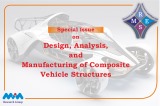Research Article
Predicting strength of concrete by ensemble technique
Monali Kirangea1, Lomesh Mahajan2
1Department of Computer Engineering, RCPET’s IMRD, Shirpur, 425405, India
2Department of Civil Engineering, R. C. Patel Institute of Technology, Shirpur, Affilated to Dr. Babasaheb Ambedkar Technological University, Lonere, India
Keywords
Abstract
Compressive strength;
Cement;
Concrete;
Ensemble technique;
Decision tree
The developing countries share similar attributes at all the regions. Still 43% of urban population did not escape from slums live hoods. As many developing countries focuses on the infrastructural development and try to improve people living standards. This infrastructural built-up activity consumes lots of concrete and other construction materials. These construction materials possess different properties from place to place. Cementitious composites undergo transformations in their fundamental properties due to regional variations in environmental conditions. Therefore, their mechanical strength computing tools plays crucial role. When topic touches with concrete, one of the most important characteristics is the compressive strength. Predicting the strength of concrete has traditionally been done with using mechanical means, but in recent years few soft computing methods have become important tools. In this research, we apply two methods to compute the Compressive strength of fly ash concrete based on the results of our own experimental findings. To anticipate concrete strength., this study investigated the properties of all the materials involved. The ensemble methodology and the decision tree were two of the success-forecasting methodologies that were investigated, and comparative assessments were made on them. The R2 value for the ensemble methodology was determined to be 0.96, which was much higher than the DT method's 0.76. In addition to k-fold Cross Validation, the findings of the trials are further supported by assessments of root mean square error (RMSE) and root mean error (RME). Ensemble approaches are good for minimizing model variance, improving prediction accuracy. Combining many models to make a single forecast from all their potential predictions eliminates variation.
© 2023 MIM Research Group. All rights reserved.


